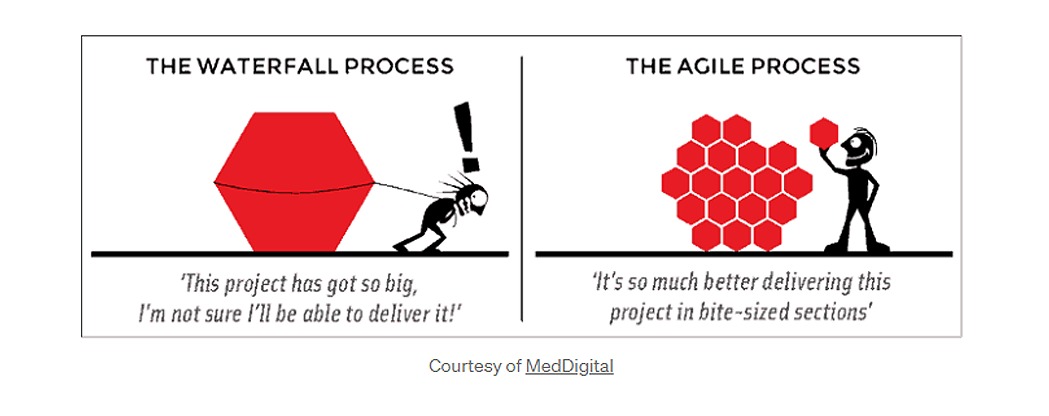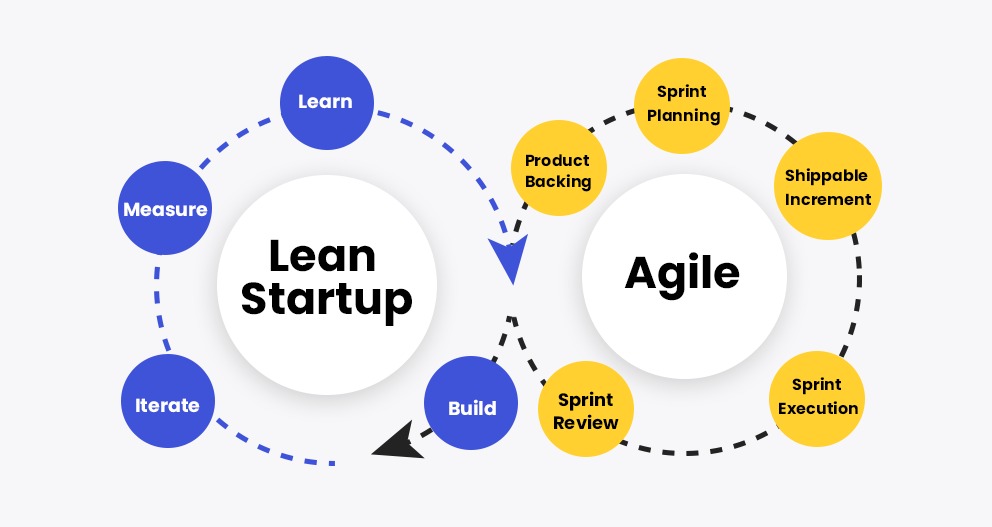
Customers are why we are all in business.
However, before getting your product out to the customer, it has to go through development. Selecting the right software development methodology is all the more important if you are hiring an IT company to develop your web app or for that matter any software project. You will be interacting with the team regularly and understanding how the communication will happen depends on the methodology.
Methodologies for web app development
Here is an overview of the most widely used software development methodologies tailored for specific kinds of projects.
1. Waterfall Model
The waterfall software development approach is the most simple and easy to understand. A linear and structured approach that follows a specified sequence of events. “Waterfall” because of its unidirectional movement through the phases of conception, initiation, design, construction, testing, deployment, and maintenance.
Only when one phase is complete, can the next phase begin. Each phase has specified deliverables and a review process. Verification at each phase ensures early detection of errors within the same phase itself. Process and results are well documented.
Best suited for:
An approach that works well for small and easy projects. Very effective when you know exactly what you want for your web app and have a limited budget. Project timeline, deliverables, and cost estimates are clearly understood even before the project begins. Minimal customer involvement in the development process.
Not suitable for:
Once a phase is finished, it cannot be altered without disrupting the whole process. Waterfall processes are only tested a long way into the process and if mistakes are found, it’s often expensive to fix. It doesn’t work well for long and ongoing projects as it doesn’t cater to changes in requirements during the development cycle.
Read about: Why are both a UX designer and Software Engineer needed for app build

2. Agile Methodology
Iterative means the software development process is split by breaking down large tasks into smaller tasks. Each task delivers some valuable improvements or additional features. The design of such an approach is simple and easy to implement.
Being customer-centric, agile development methodology values individuals and their relationships and interactions over tools. Team strengths and efficiency, internal feedback from departments and clients, and client satisfaction are the features of this approach. Client interaction is maximized with the team quickly responding to changes in direction or even goals while shaping up the product.
Here time is boxed into sprints A sprint being the time allocated for a particular task. A sprint typically lasts for a minimum of 2 weeks and there is no particular order. Once a sprint is completed, the feedback from that phase is used to plan the immediately following phase.
Best suited for:
Agile development methodology works best for projects that may not have clear goals or may need changes or revision as the project progresses.
Not suitable for:
In some cases, the very high degree of customer involvement may be a disadvantage. Not suitable for customers who do not have the time or inclination for this type of participation. Also, there is a risk of endless product changes.

3. Lean IT Methodology
Lean methodology is categorized by short development cycles, early testing, and of course, frequent customer feedback. The team is, empowered and all the team members are responsible for the project’s issues. Delivering faster on the client’s requirements is the key.
Agile though an excellent approach, does not cover instructions for scaling these practices across the organization. Organizations, which practice Agile at the team level, look to the Lean methodology to help to innovate at scale – eliminate waste, build quality, create knowledge, deliver fast.
Not Suitable for:
Here teams will need to work independently without too much direction, which could be problematic if your team is inexperienced. Being result-oriented, Lean methodology can be stressful for the team.
4. Extreme Programming (XP)
Extreme Programming’s set of values include the value of simplicity by developing exactly what is required. Also, feedback at every step of the process and collaboration between team members make XP a better model. It requires the team to understand the product as well as the client or even better to provide clients technological solutions for a problem.
So you, the customer, describe the features you are looking for in the app to the developers. They then plan and schedule and design and divide work into iterations. Frequent and continuous testing means software that is error-free. Listening to feedback means developers can better understand the functionalities.
Not suitable for:
Extreme Programming may not be suitable for every scenario and team. Customer participation is vital and the customer may not be interested in being involved to the extent that XP requires. This method also requires a relatively large time investment and involves higher costs.
Also read: Mobile App Development Trends That Are Dominating 2021
5. Scrum Methodology
So we have the Scrum Team, the Scrum Master whose task is oversight of the team and helping the team to work towards delivery of the final product, and the Product Owner. The Product Owner is the customer’s representative who focuses on the vision of the customer. Scrum meetings are held daily during the sprint to discuss progress and listen to feedback and plan how they can meet delivery deadlines, this process does away with paperwork.
The team develops web apps using an iterative approach. End goals are split into smaller goals initially, and team members work towards goals using sprints to build software.
Not suitable for:
This method is not suitable for large projects. It requires a highly expert team, so newcomers are not given a chance.
Finally:
Every methodology has its pros and cons. Our 18 years of experience in developing web projects for US industries, helps us to suggest the best methodology to deliver a successful project, on time. We are always excited to have our experts discuss your project details and provide you solutions.







